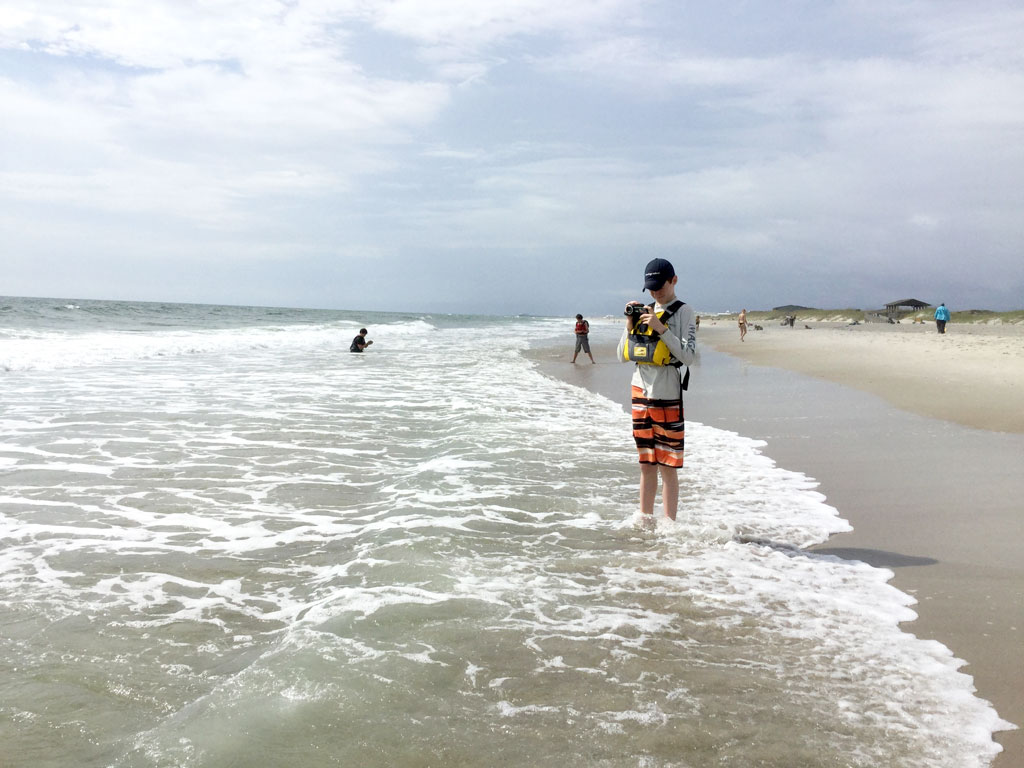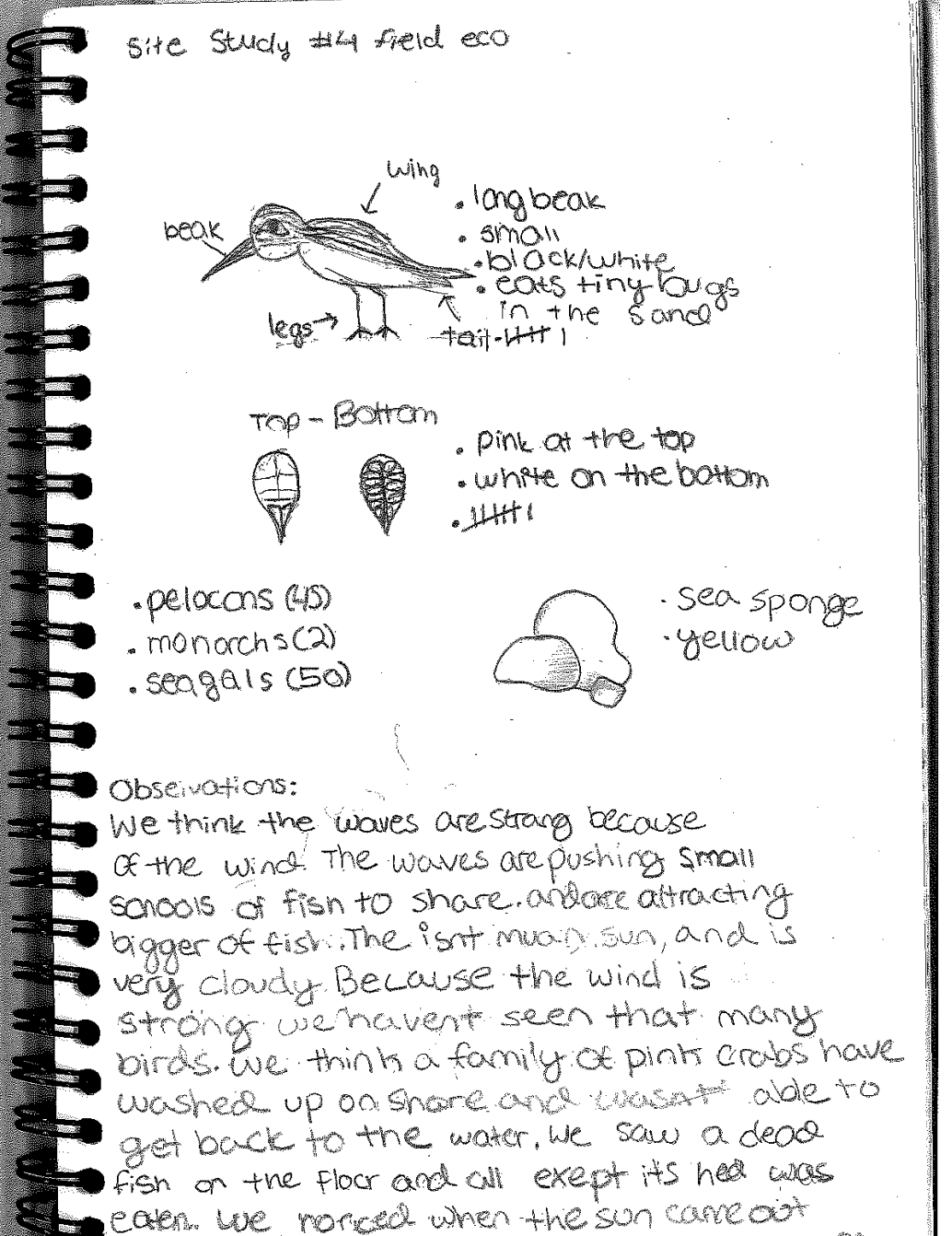
Soil

- There is no soil in this area, there is only a mix of sand and organic matter. No rocks in the area either.
Water
- Salt water
- pH was a little too basic
- Nothing out of the ordinary, amount of nitrates and phosphates shows animal life is present and healthy
- 48% oxygen
- Temp: 24 degrees
- 22 turbidity, relatively cloudy water for the area, probably from the large amount of sand and organic matter on the beach
Human impact
- The area was very clean, there was little to no trash
- Vehicle marks throughout the beach, could’ve been from vehicles to clean the beach
- In North Carolina people are building artificial reefs in the ocean to try to get more fish in the area (since there is lower oxygen level in the water)
- Large fishing boats in the distance as well as many paths and pavilions
- The area is Heavily impacted by humans

- Wildlife dependent on humans in the area
- Climate change
- Every time a hurricane wildlife changes
Hurricanes
- Because of hurricanes landscapes of the dunes will change
- Minor hurricanes won’t pass the first strip of sand dunes
- Climate change causes more frequent large hurricanes
- Larger hurricanes get past this first strip and will make the dune area a wetland
- The wildlife is altered every time there is a large hurricane
Zoology
- Burrows in the ground from different animals
- Very small, smooth around the sides, slants down, every hole makes a turn in the same direction
- Seagulls and pelicans and sandpipers fishing and scavenging on the beach
- Small clams that burrowing in the sand, could possibly be the burrows that we found on the beach


Botany
- Sea oats are long grasses that grow in the sand dunes and hold them together
- They grow deep underground with long roots that connect to each other underground
- 3 zones, beach, prairie, grassland
- 3rd zone soil had much richer soil with more plant life
- No Plants or species in the beach zone
- Very little plants in the grassland zone
- Shrubbery and golden rod and pine trees in the prairie zone

Conclusion by Data Analyst:
The beach we went to was heavily impacted by humans which affected lots of the things that were happening in the environment. There were bridges, boardwalks, pavilions, and people on the beach. I noticed that many of the people on the beach were feeding the wildlife like a variety of birds. This will make some of the wildlife dependent on humans. The ph scale is almost perfect which means it is a great environment for animals to live in so I did notice a lot of wildlife. A beach is a great place for plants to grow as well because the area doesn’t get a lot of hurricanes anymore due to climate change. But when there are hurricanes, it will affect the environment tremendously and create wetlands that will destroy or change habitats. Every time there is a hurricane, the wildlife species that live at Ft. Macon Beach will change. So this area changes quite a bit after any kind of big storm.
